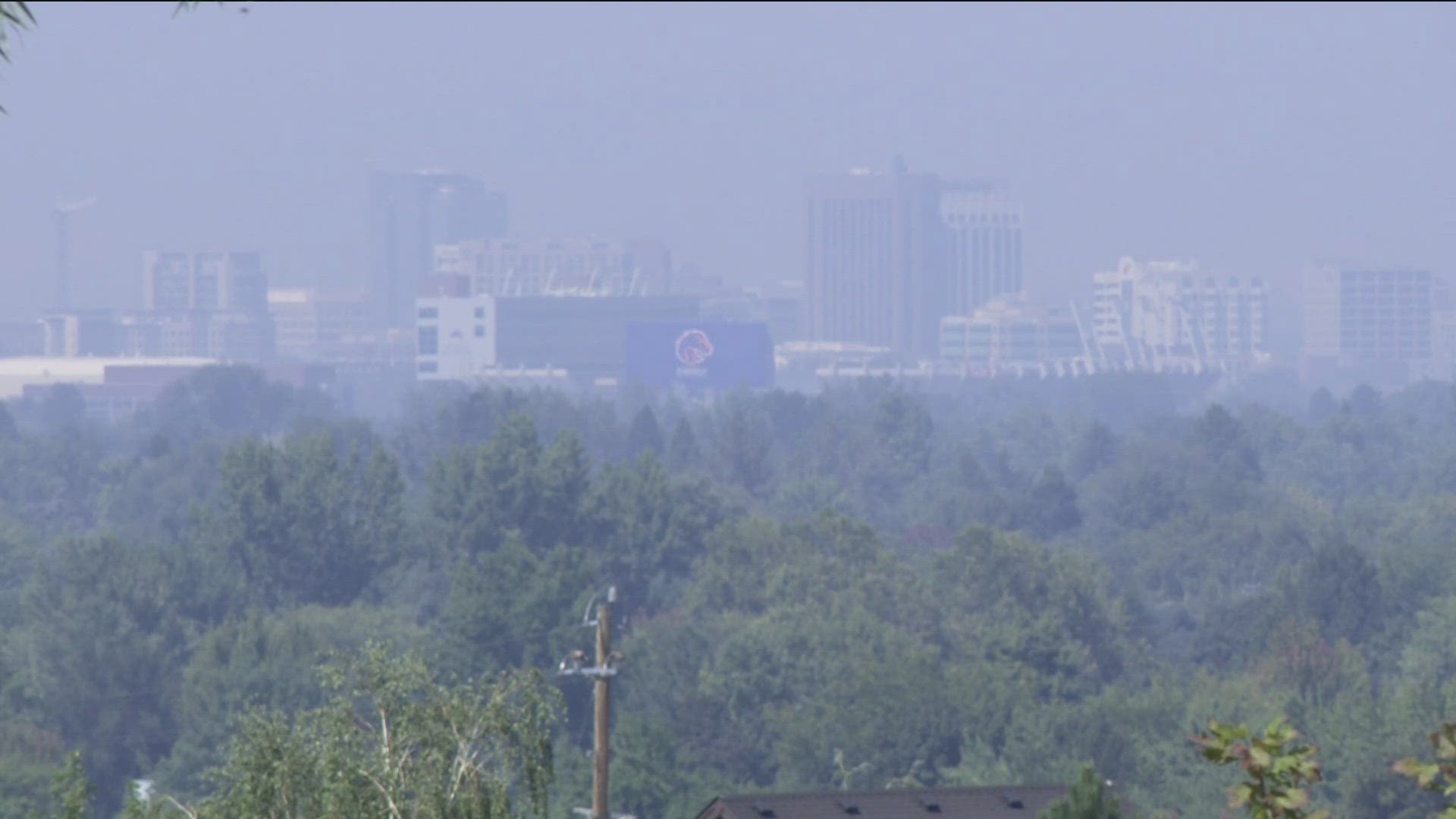BOISE, Idaho — As wildfires continue to affect air quality in Idaho, many residents are relying on the Air Quality Index (AQI) to determine whether it's safe to be outside.
Confusion was caused today in Boise as one AQI sensor at the airport reported green or “good’ air quality while the surrounding area was evidently showing worse conditions.
Idaho Department of Environmental Quality (DEQ) operates over 30 AQI monitoring stations across the state, but not all sensors measure the same pollutants.
Some measure particulate matter (PM) from chemicals such as wildfire smoke, while others— like the Boise airport monitor— only track ozone levels.
That is the reasoning behind the Boise AQI station showing a green AQI rating, despite the visibly poor conditions.
Air quality sensors monitor different types of particulate matter which can include solid, liquid, or gas particles in the air.
The two most common measurement levels are PM10 and PM2.5. PM10 refers to particles 10 micrometers or smaller, which are inhalable. PM2.5 particles are also inhalable but are even more fine, measuring at 2.5 micrometers or less, often found in smoke.
PM2.5 is the primary pollutant during wildfire season, which is why most AQI stations are showing hazardous air quality. Since the Boise station only monitors at the PM10 level, it misses the wildfire smoke in its readings.
To get a more accurate picture of the air quality, the Idaho DEQ suggests looking at the entire AQI real-time map for the region you are in, as nearby stations are likely to show similar concentrations.
"Over the years there has been a model study of airshed component to our valley, meaning that typically if you see concentrations in one area, then the closest are next to you is more than likely going to have similar concentrations" Michael Toole, Regional Airshed Coordinator with IDEQ told KTVB Thursday.
IDEQ also notes that localized factors such as wind and smoke drifting can cause slight variations in readings.
Other frequently used sources such AirNow, Watch Duty, or Purple Air, include private air quality sensor readings. Michael Toole saaid DEQ is unable to verify the accuracy of those private sensors used, though they are still often used for supplemental data.
The DEQ can ensure extreme accuracy on their AQI sensors because “there is a very rigid maintenance, audit and calibration process that our monitoring people have to follow in order to maintain that accuracy. That information is used as it pertains to air compliance for the national ambient air quality standards,” Toole explained.
While it is important to check AQI levels in your area, it is equally as important to understand which pollution type each monitor tracks as well as consulting the full region map for the most reliable air quality assessments.

